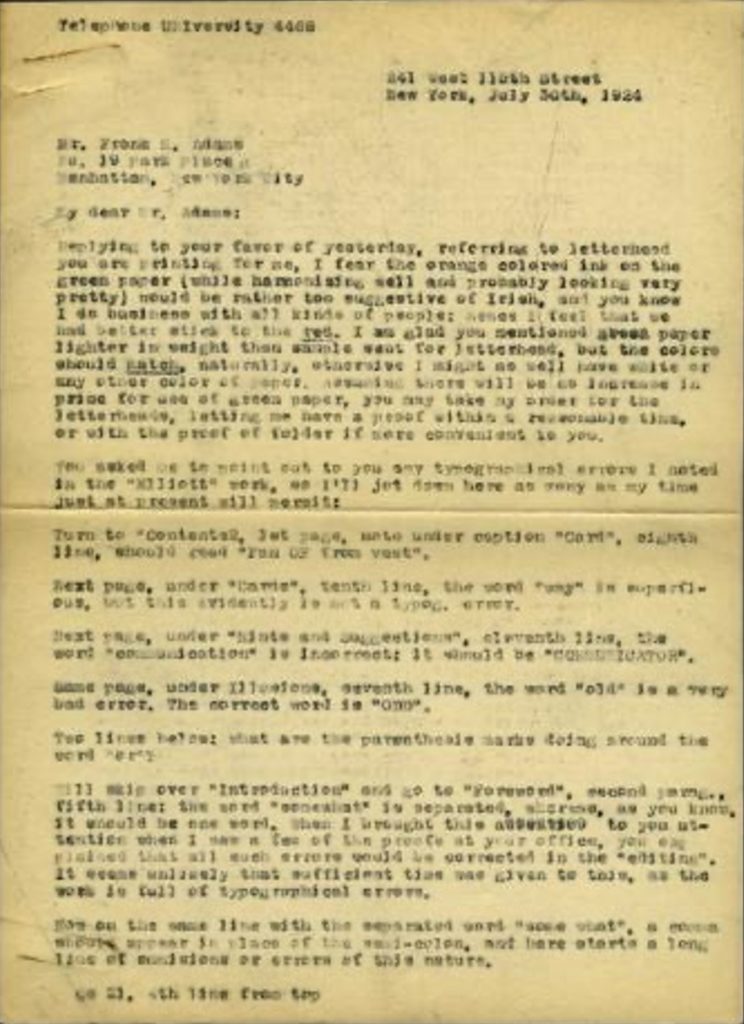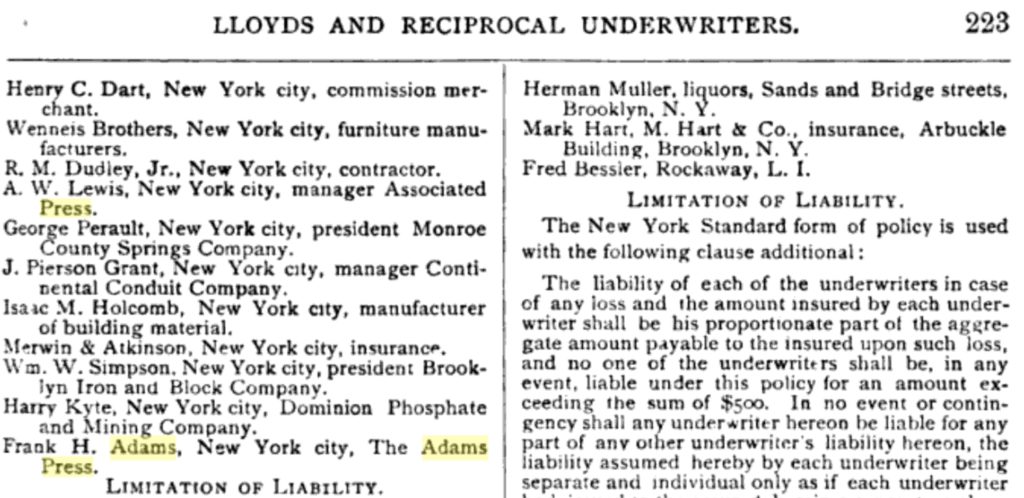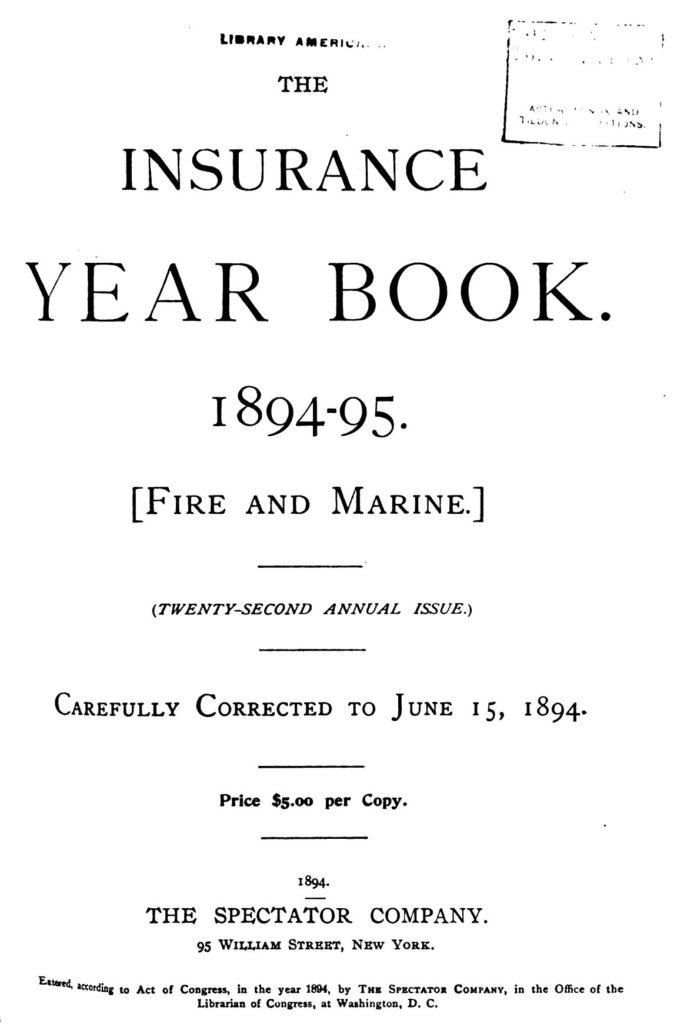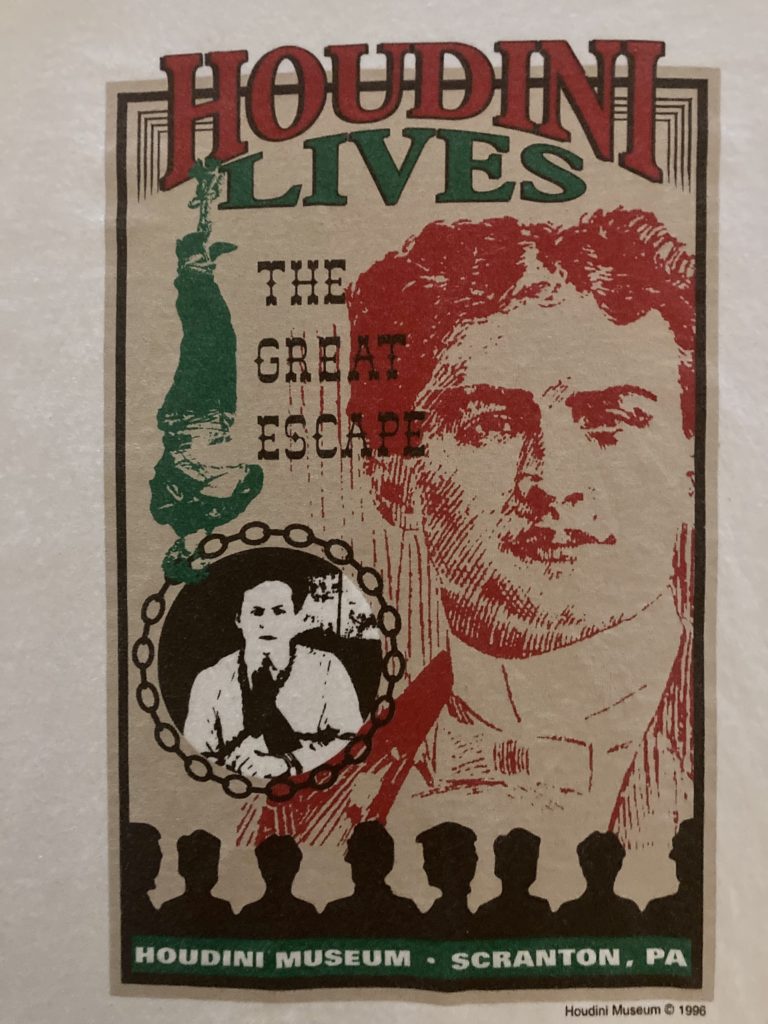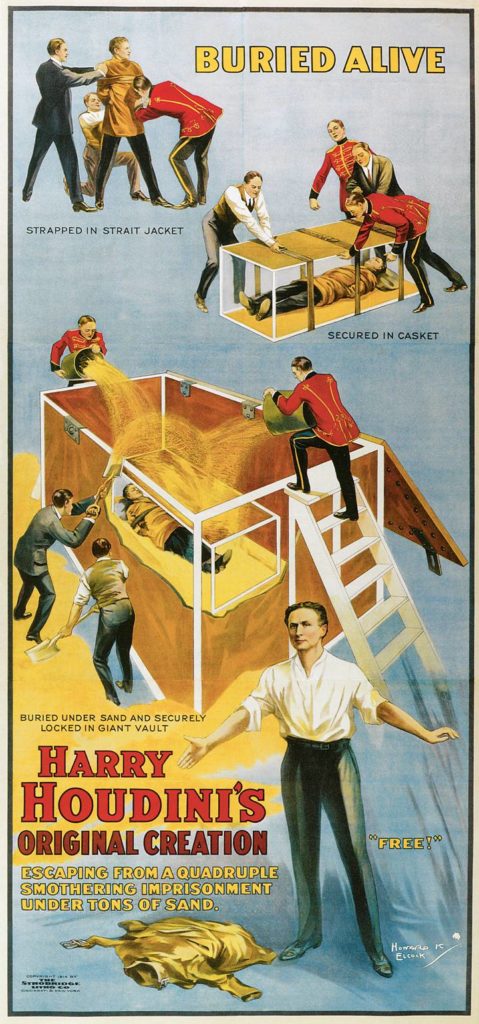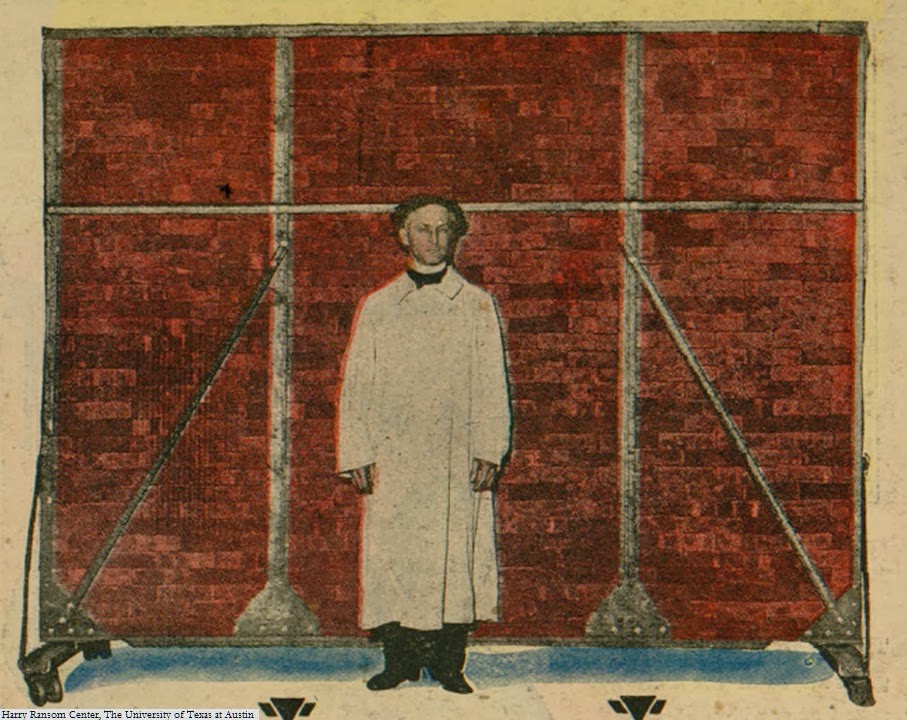Kevin Connolly on his popular Conjuring History FB page asked the following question:
- Houdini used his home address to conduct various business ventures. Does anyone know why he chose “Adams Press” as a name for the publications he produced?
And Doug Edwards had an excellent answer:
- Obviously “Adams Press” was a print shop that did print work for Houdini…Their name was on several of Harry’s pamphlets, etc…So when he got mail under their name, he would take it over to them and they would do the printing
As a follow-up, thought I would share (via this post) some additional thoughts and research that first ties Oscar S Teale to “Adams Press”.
You see, not only was Oscar Schutte Teale (1847-1934) an illustrator/researcher/ghostwriter for Houdini, he was also an architect, and he published under the name “Adams Press”.

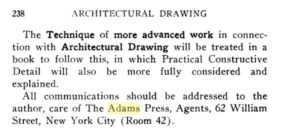
In 1914, Oscar S. Teale self-published “How to do Architectural Drawing”. “Adams Press” (62 Williams Street, NYC) was the printer and selling agent.
 In 1920, he published the book, “Higher Magic – Magic for the Artist” under the name “Adams Press” and used his home address, 240 Broadway, New York City.
In 1920, he published the book, “Higher Magic – Magic for the Artist” under the name “Adams Press” and used his home address, 240 Broadway, New York City.
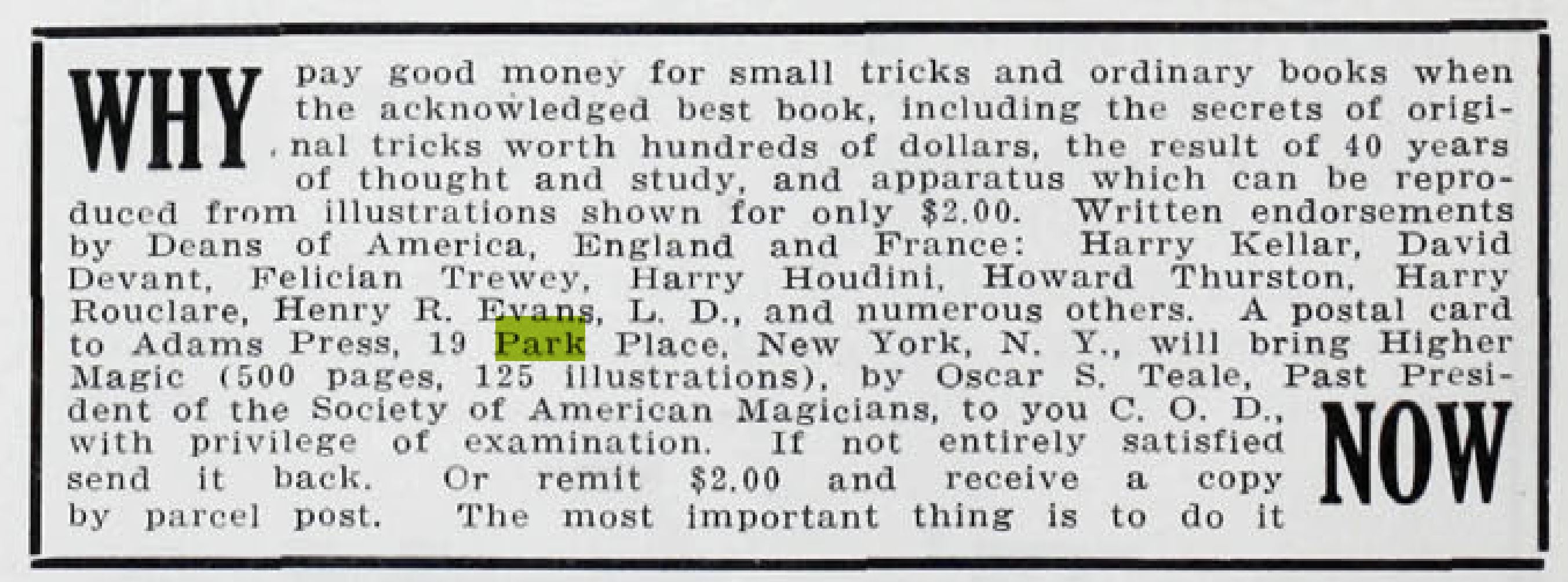 In 1923, he started using address 19 Park Place for “Higher Magic – Magic for the Artist”.
In 1923, he started using address 19 Park Place for “Higher Magic – Magic for the Artist”.
 1923 was also the year, he illustrated Houdini’s “Elliott’s Last Legacy”, under the name “Adams Press”, but utilized Houdini’s home address, 278 West 113th Street.
1923 was also the year, he illustrated Houdini’s “Elliott’s Last Legacy”, under the name “Adams Press”, but utilized Houdini’s home address, 278 West 113th Street.
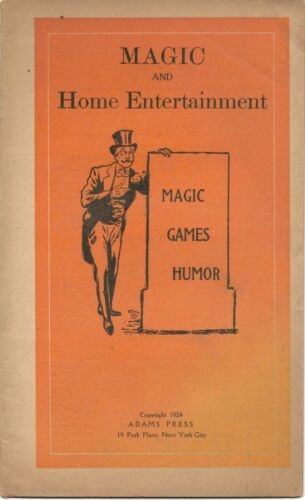
HHCE Collection
In 1924, “Adams Press” published a beginning magic book, “Magic and Home Entertainment”, via 19 Park Place address;
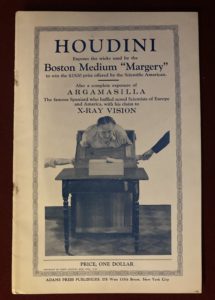
HHCE Collection
And also in 1924, “Adams Press” published “Houdini Exposes the Tricks used by Boston Medium Margery” via 278 West 113th Street address.
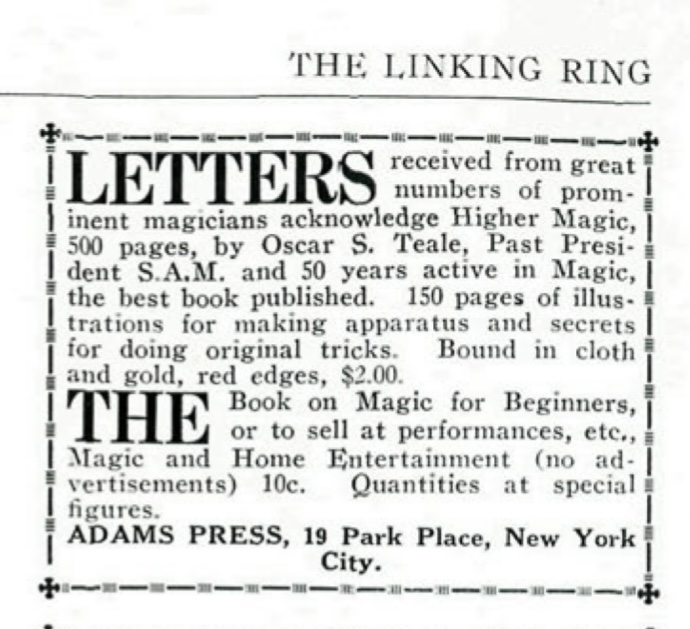 So by 1924/1925, you could get Teale’s Higher Magic – Magic for the Artist” and a “Magic and Home Entertainment” directly from 19 Park Place. And Houdini book orders published by “Adams Press” still went to 278 West 113th Street, but were printed at 19 Park Place.
So by 1924/1925, you could get Teale’s Higher Magic – Magic for the Artist” and a “Magic and Home Entertainment” directly from 19 Park Place. And Houdini book orders published by “Adams Press” still went to 278 West 113th Street, but were printed at 19 Park Place.

Potter and Potter Spring Magic Auction 5/18/2019 Lot 85 Adams Press Mailer with “Elliotts Last Legacy” Prospectus, New York, 1925 5 pieces, including the original Adams Press mailing cover, addressed to Lewis Duff, a prospectus with order form for Elliotss’s Last Legacy, a sample booklet and bulk order for “Magic and Home Enterntainment{ and a return envelope.
Which just leaves one question, who was the printer and selling agent behind “Adams Press” located at 19 Park Place?
Tune in next week, where I reveal the answer to who is Adams at “Adams Press”.

